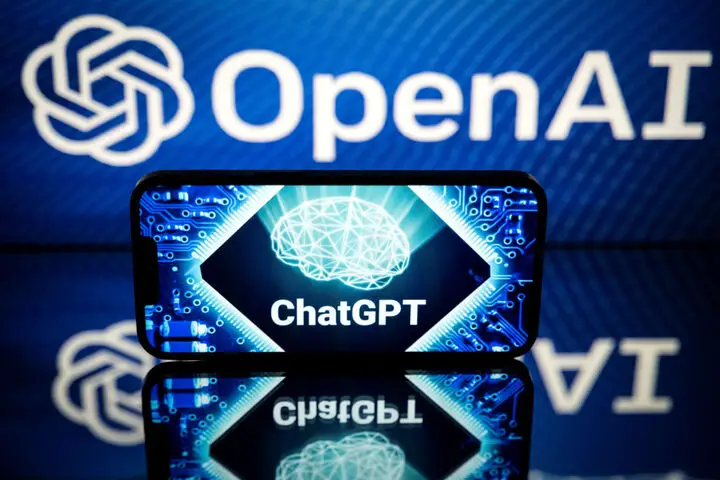Chatgpt And The Challenge Of Detecting Ai-generated Text

Executive Summary

The rise of Artificial Intelligence (AI) has led to a surge in AI-generated content, posing significant challenges in detecting and distinguishing it from human-written text. The need for reliable methods to detect AI-generated text is crucial for ensuring authenticity, preventing plagiarism, and safeguarding the integrity of online content. This article provides an in-depth analysis of the challenges in detecting AI-generated text, exploring five key subtopics and offering practical insights into current and emerging detection techniques.

Introduction
The proliferation of AI-powered language models has revolutionized content creation, enabling machines to generate text that mimics human language patterns and styles. However, the ability of AI systems to produce convincing human-like text presents challenges in identifying AI-generated text, leading to concerns about authenticity, plagiarism, and the spread of biased or misleading information. This article aims to provide a comprehensive overview of the challenges and methodologies involved in detecting AI-generated text.
FAQs
1. Why is it important to detect AI-generated text?
Detecting AI-generated text is essential for:
- Maintaining authenticity: Ensuring that content is genuinely created by humans and not machines.
- Preventing plagiarism: Detecting unauthorized use of AI-generated content without proper attribution.
- Combating misinformation: Identifying AI-generated content that may contain biased or inaccurate information.
2. What are the challenges in detecting AI-generated text?
- Improving techniques: AI-generated text is becoming increasingly sophisticated, making it difficult to distinguish from human-written text.
- Recognizing patterns: AI systems can learn and adapt, making it challenging to develop robust detection algorithms.
- Bias and accuracy: AI-generated text detection methods may exhibit bias towards certain types of text or writing styles.
3. What are the different approaches to detecting AI-generated text?
Techniques for detecting AI-generated text include:
- Statistical analysis: Identifying statistical differences between AI-generated and human-written text, such as word frequency and sentence length.
- Natural language processing: Analyzing AI-generated text for unnatural language patterns and deviations from human writing styles.
- Machine learning: Training machine learning models on datasets of known AI-generated and human-written text to identify characteristic features.
Subtopics
Perplexity
Perplexity measures the difficulty of predicting a word in a sequence based on the preceding words. Lower perplexity scores indicate that the text is more predictable, suggesting that it may have been generated by an AI system.
- High perplexity: Human-written text tends to have higher perplexity scores due to its complexity and unpredictability.
- Low perplexity: AI-generated text may have lower perplexity scores because it follows more predictable patterns.
- Statistical modeling: Perplexity-based detection methods employ statistical models to calculate the probability of a text sequence and assign a perplexity score.
Burstiness
Burstiness refers to the tendency of a text to exhibit abrupt changes in word frequency or style. Human-written text typically has higher burstiness, while AI-generated text may be more consistent.
- High burstiness: Human-written text tends to exhibit more abrupt changes in language patterns and vocabulary.
- Low burstiness: AI-generated text may display lower burstiness due to its tendency to follow predetermined patterns.
- Statistical analysis: Burstiness-based detection methods analyze the frequency of words and phrases in a text to identify deviations from expected human language patterns.
Syntactic Complexity
Syntactic complexity refers to the complexity of a sentence’s structure and the degree to which it deviates from common grammatical rules. Human-written text typically exhibits greater syntactic complexity.
- High syntactic complexity: Human-written text often employs complex sentence structures and diverse grammatical constructions.
- Lower syntactic complexity: AI-generated text may adhere to simpler sentence structures and follow more predictable grammatical rules.
- Natural language processing: Syntactic complexity-based detection methods employ natural language processing techniques to analyze sentence structure and identify deviations from human writing patterns.
Semantic Coherence
Semantic coherence measures the degree to which a text’s meaning is consistent and logical. Human-written text typically demonstrates high semantic coherence.
- High semantic coherence: Human-written text tends to exhibit a consistent and well-organized flow of ideas.
- Lower semantic coherence: AI-generated text may exhibit semantic inconsistencies or lack a clear logical structure.
- Natural language processing: Semantic coherence-based detection methods employ natural language processing techniques to analyze text meaning and identify deviations from human-like coherence patterns.
Topic Modeling
Topic modeling is a technique used to identify the underlying themes and topics discussed in a text.
- Diverse topics: Human-written text typically covers a wider range of topics and may incorporate diverse perspectives.
- Narrow topics: AI-generated text may focus on a narrow range of topics and exhibit less variation in subject matter.
- Machine learning: Topic modeling-based detection methods employ machine learning algorithms to extract topics from text and identify deviations from human-like topic distribution patterns.
Conclusion
Detecting AI-generated text is becoming increasingly challenging as AI systems become more sophisticated in generating human-like content. However, by understanding the challenges and leveraging a combination of detection
